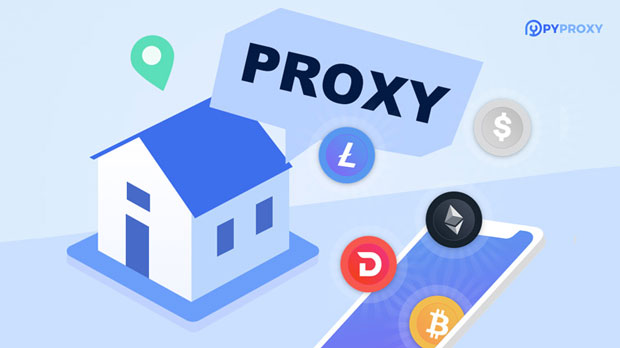The internet has become an essential part of our daily lives, and for many users, maintaining privacy and security while online is a top priority. Proxies are one of the tools commonly used to protect privacy, allowing users to mask their IP address, encrypt traffic, and bypass geographical restrictions. Among the various proxy types, HTTP and socks5 proxies are widely used. Converting from an HTTP proxy to a socks5 proxy can raise questions about the potential impact on privacy and security. While both proxies offer different benefits, understanding how this conversion affects your online safety and anonymity is crucial. This article will explore whether switching from an HTTP proxy to SOCKS5 will influence your privacy and security, examining the differences between these proxy types and their respective advantages and limitations. Understanding HTTP and SOCKS5 ProxiesBefore analyzing the impact of switching from HTTP to SOCKS5, it is essential to understand what each of these proxies does.1. HTTP Proxy: Basic Functionality and Limitations An HTTP proxy works by acting as an intermediary between the client (your device) and the internet server. It is specifically designed to handle web traffic, meaning it only works for HTTP and HTTPS protocols. When a user sends a request to visit a website, the HTTP proxy forwards that request to the server on behalf of the user, effectively masking the user's IP address. This proxy can filter traffic, cache data, and potentially modify requests and responses based on predefined rules. While HTTP proxies are effective for basic web browsing, they have certain limitations. For example, they cannot handle non-HTTP traffic such as FTP or peer-to-peer protocols. Additionally, HTTP proxies can leak data regarding the user's identity if not configured correctly, and they typically do not offer encryption for traffic. Thus, they are less secure than other proxy types.2. SOCKS5 Proxy: A More Versatile Alternative SOCKS5 proxies, on the other hand, are more flexible and can handle a wider range of protocols, including HTTP, HTTPS, FTP, and others. They do not interfere with the data being sent between the client and server, offering a higher level of privacy. SOCKS5 proxies work at a lower level, handling all types of traffic and not altering or inspecting the data. One of the key benefits of SOCKS5 is its ability to provide greater anonymity. Unlike HTTP proxies, SOCKS5 does not modify your internet traffic, meaning it does not inject additional headers or change the request in any way. This makes SOCKS5 proxies more suitable for users who want to avoid data manipulation or leakage.Privacy Considerations: HTTP vs. SOCKS5When converting from an HTTP proxy to a SOCKS5 proxy, privacy is one of the most significant concerns. The level of privacy offered by each proxy type varies based on their respective mechanisms.1. IP Address Masking and Anonymity Both HTTP and SOCKS5 proxies allow users to hide their real IP address, which is essential for preserving privacy. However, SOCKS5 generally offers better anonymity because it operates at a lower level of the network stack. HTTP proxies, on the other hand, might still expose your real IP address in certain situations, such as when using non-HTTP traffic or when misconfigured. SOCKS5 proxies are more robust in handling various types of internet traffic without exposing additional information about the user.2. Data Leakage and Potential Vulnerabilities HTTP proxies have a tendency to leak certain types of data, especially when handling HTTPS traffic. This is due to the way HTTPS works — the proxy can act as a middleman between the client and server, which can sometimes result in leaking metadata, such as the URLs of visited websites. SOCKS5, however, does not modify the traffic, reducing the chances of such leaks. As a result, users may enjoy a higher level of security when using SOCKS5 for activities like browsing or file transfers.Security Considerations: HTTP vs. SOCKS5Security is another important aspect to consider when choosing between HTTP and SOCKS5 proxies. While both types of proxies provide some level of protection, their effectiveness varies based on the type of traffic being transmitted and the level of encryption they support.1. Encryption and Traffic Integrity By default, neither HTTP nor SOCKS5 proxies encrypt traffic. However, some SOCKS5 proxies may offer the option to encrypt the data flow between the user and the proxy server, providing an additional layer of security. This is particularly important for users who want to protect their internet activities from potential eavesdropping or man-in-the-middle attacks. HTTP proxies typically do not offer this feature, which means that users must rely on other means, such as using HTTPS, to secure their traffic.2. Protocol Support and Handling of Non-HTTP Traffic HTTP proxies are limited in the types of traffic they can handle, as they are designed exclusively for web browsing. This means that non-HTTP traffic, such as email or file-sharing activities, will not be masked or protected by an HTTP proxy. SOCKS5 proxies, on the other hand, can handle multiple types of traffic, including email, FTP, and even P2P protocols, making them more versatile and secure for users who engage in a variety of online activities. The ability to secure all types of traffic with SOCKS5 reduces the risks associated with using different services and protocols.Impact of the Conversion on Security and PrivacyWhen switching from an HTTP proxy to a SOCKS5 proxy, several important security and privacy changes occur.1. Improved Anonymity with SOCKS5 SOCKS5’s ability to handle all types of traffic, including non-HTTP protocols, without altering or injecting headers provides a significant boost to online anonymity. Unlike HTTP proxies, which may leak identifying information or even expose the user’s real IP address, SOCKS5 proxies ensure that traffic remains anonymous and secure across various services.2. Reduced Risk of Data Interception Since SOCKS5 proxies do not interfere with the data packets, they are less likely to be involved in any man-in-the-middle attacks or data manipulation. HTTP proxies, while still providing some level of privacy, are more prone to such risks due to their tendency to alter or monitor traffic. Therefore, switching to SOCKS5 can significantly reduce the risk of interception and tampering.3. Better Handling of Encrypted Traffic SOCKS5 proxies offer more flexibility in handling encrypted traffic. Since they do not modify data or traffic requests, they are more suitable for protecting the privacy of users engaging in encrypted communications. This makes SOCKS5 a better option for privacy-conscious individuals who use encrypted messaging services, file transfers, or VPN connections.Conclusion: Is It Worth Switching to SOCKS5 for Better Privacy and Security?Switching from an HTTP proxy to a SOCKS5 proxy generally offers several advantages in terms of both privacy and security. SOCKS5 proxies are more versatile, secure, and better at preserving anonymity across various types of internet traffic. While HTTP proxies may suffice for basic web browsing, they lack the flexibility and protection that SOCKS5 can provide.For users who prioritize privacy and security, converting to SOCKS5 is a valuable decision. It reduces the risk of data leakage, enhances protection against man-in-the-middle attacks, and ensures better handling of encrypted traffic. Ultimately, whether or not to switch depends on your specific needs, but for users seeking robust privacy and security, SOCKS5 is often the better choice.
Jan 02, 2025






















































